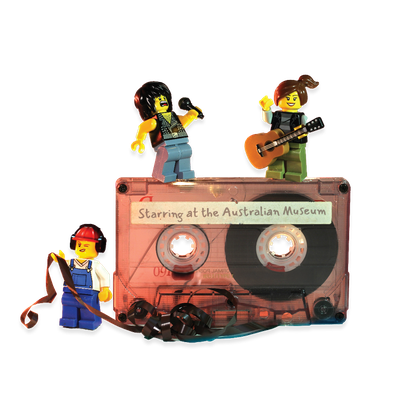Your search returned 80 results
By Page Type
By Tag
- All
- fish (966)
- blog (696)
- fishes of sydney harbour (401)
- First Nations (299)
- Blog (236)
- AMRI (169)
- archives (164)
- Eureka Prizes (146)
- Aboriginal and Torres Strait Islander (135)
- insect (126)
- Ichthyology (124)
- geoscience (109)
- minerals (102)
- climate change (99)
- podcast (94)
- Fish (91)
- Anthropology (89)
- International collections (80)
- Minerals Gallery (78)
- wildlife of sydney (78)
- Labridae (77)
- frog (74)
- gemstone (70)
- photography (66)
- history (64)
- Mollusca (60)
- gem (59)
- staff (59)
- Birds (56)
- Gems (56)
- Indonesia (56)
- education (56)
- shark (55)
- AMplify (54)
- people (53)
- earth sciences (50)
- exhibition (50)
- past exhibitions (50)
- Gobiidae (48)
- sustainability (46)
- Pomacentridae (45)
- Serranidae (44)
- lifelong learning (42)
- science (42)
- Earth and Environmental Science (41)
- Syngnathidae (41)
- Ancient Egypt (40)
- Bali (40)
- bird (40)
- dangerous australians (40)
-
The Scribe and Hieroglyphs
https://australian.museum/learn/cultures/international-collection/ancient-egyptian/the-scribe-and-heiroglyphs/Scribes held one of the noblest professions in ancient Egypt and were among the wealthier inhabitants of an artists village.The elevated status of scribes was due to the importance given to Egyptian written language and that only a small percentage of the population was literate.
-
The Potter in ancient Egypt
https://australian.museum/learn/cultures/international-collection/ancient-egyptian/the-potter-in-ancient-egypt/From the earliest times, Egyptian potters were mass producing containers for everyday activities such as cooking, drinking and food storage.
-
Art in ancient Egypt
https://australian.museum/learn/cultures/international-collection/ancient-egyptian/art-in-ancient-egypt/Ancient Egyptian art has survived for over 5000 years and continues to fascinate people from all over the world. An ancient premise has become a modern reality: art is a path to eternal remembrance.
-
Bali: The Forge Collection
https://australian.museum/learn/cultures/international-collection/balinese/bali-the-forge-collection/Many objects enter museum collections because they are no longer used, having been replaced by new versions. This is the case with the traditional Balinese temple paintings in the Australian Museum's collection.
-
Ancient Egyptian Collection
https://australian.museum/learn/cultures/international-collection/ancient-egyptian/The Australian Museum’s Egyptian Collection includes over one thousand objects and is one of the largest public collections of Egyptian antiquities in Australia.
-
Chinese Collection
https://australian.museum/learn/cultures/international-collection/chinese/A small collection from a cultural giant, discover the objects from China held in the Australian Museum's World Cultural Collection.
-
Ancient Egyptian objects documented in 3D
https://australian.museum/learn/cultures/international-collection/ancient-egyptian/ancient-egyptian-3d/Explore some of the Ancient Egyptian objects in our International Collection captured in 3D with photogrammetry.
-
Our Global Neighbours: God of War - Two Incarnations
https://australian.museum/learn/news/blog/our-global-neighbours-god-of-war-two-incarnations/One big and one small figure of the God Gou from Dahomey.
-
Faience in Egyptian Culture
https://australian.museum/learn/cultures/international-collection/ancient-egyptian/faience-in-egyptian-culture/A dazzling history of a special ceramic material.
-
Discover more
2025 Australian Geographic Nature Photographer of the Year
Special exhibition
Free entry
Now open -
Discover more
Unfinished Business
Special exhibition
Free entry
Now open -
Discover more
Wansolmoana
Permanent exhibition
Free entry
Open daily -
Find out more
Burra
Permanent kids learning space
Free entry
10am - 4.30pm![]()
-
Discover more
Minerals
Permanent exhibition
Free entry
Open daily![]()




